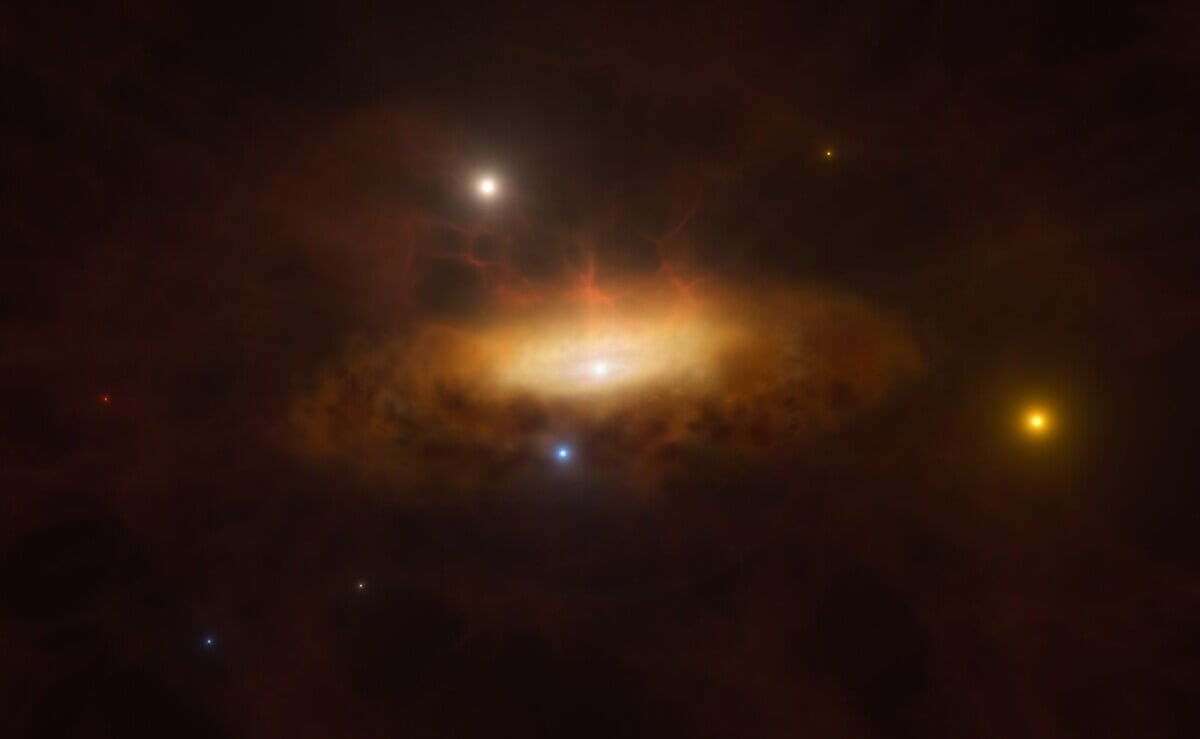
In late 2019, the galaxy SDSS1335+0728 suddenly started shining brighter than ever before and was classified as having an active galactic nucleus, powered by a massive black hole in the galaxy’s core. This is the first time the awakening of a massive black hole has been observed in real time. This artist’s impression shows the growing disc of material being pulled in by the black hole as it feeds on the gas available in its surroundings, making the galaxy light up. (Credit: ESO/M. Kornmesser)
“Imagine observing a distant galaxy for years, and it always seemed calm and inactive,” says lead author Paula Sánchez Sáez, an astronomer at the European Southern Observatory (ESO), in a statement. “Then, suddenly, its core starts showing dramatic changes in brightness, unlike any typical events we've seen before.”
Astronomers have been tracking the galaxy's brightness variations using data from several space and ground-based observatories, including ESO's Very Large Telescope (VLT). They found that the galaxy, called SDSS1335+0728, is now radiating much more light at ultraviolet, optical, and infrared wavelengths compared to before December 2019. The galaxy also started emitting X-rays in February 2024, more than four years after it was first seen to “switch on.”
While phenomena like supernova explosions or tidal disruption events can cause galaxies to light up, these brightness variations typically last only a few dozen or, at most, a few hundred days. The ongoing brightening of SDSS1335+0728 for over four years suggests a different explanation: the awakening of its massive central black hole.
Massive black holes, with masses over one hundred thousand times that of our Sun, exist at the center of most galaxies, including our own Milky Way. “These giant monsters usually are sleeping and not directly visible,” explains Claudio Ricci, a co-author from the Diego Portales University in Chile. “In the case of SDSS1335+0728, we were able to observe the awakening of the massive black hole, which suddenly started to feast on gas available in its surroundings, becoming very bright.”

This process has never been observed before in real time. Previous studies have reported inactive galaxies becoming active after several years, but this is the first instance where the awakening of the black hole itself has been witnessed as it happens.
The researchers also note that this phenomenon could potentially happen to our own galaxy's central black hole, Sagittarius A*, although the likelihood of such an event is unclear.
Follow-up observations are still needed to rule out alternative explanations, such as an unusually slow tidal disruption event or even a new phenomenon entirely. Regardless of the cause, SDSS1335+0728 provides valuable insights into how black holes grow and evolve.
As astronomers continue to study this unique cosmic event, they expect that instruments like MUSE on the VLT or those on the upcoming Extremely Large Telescope (ELT) will be key in understanding the reasons behind the galaxy's sudden brightening. This remarkable discovery opens up new avenues for exploring the mysteries of black holes and their impact on the evolution of galaxies.










